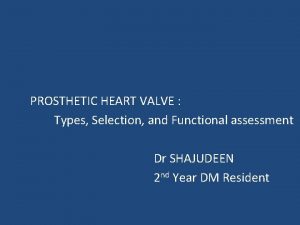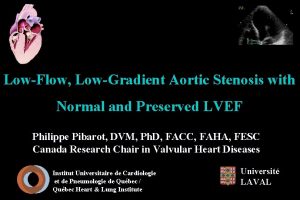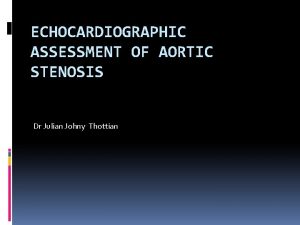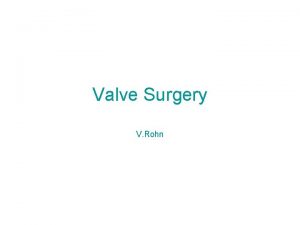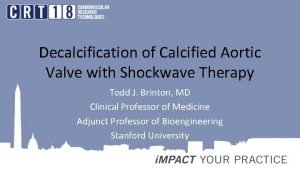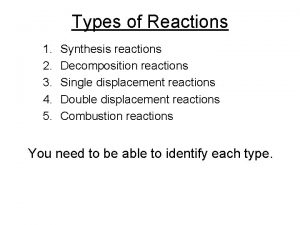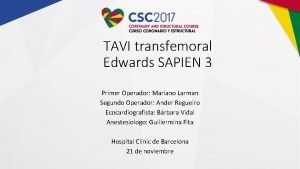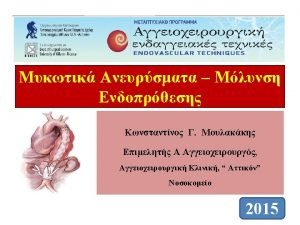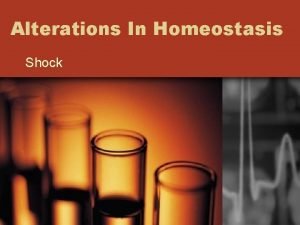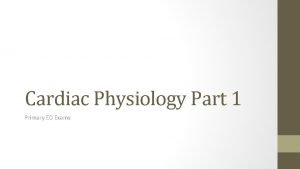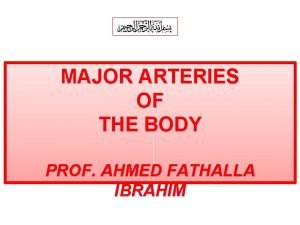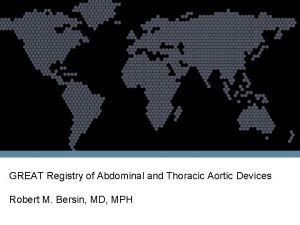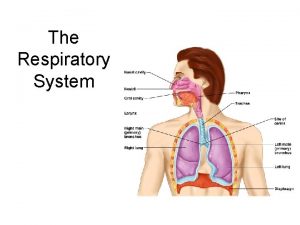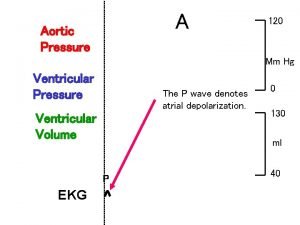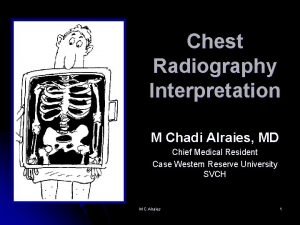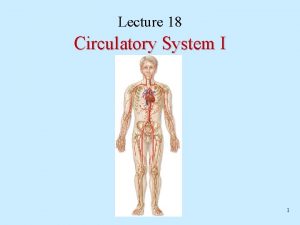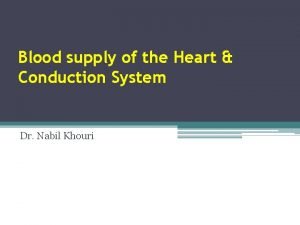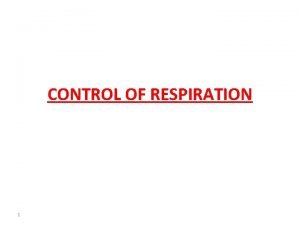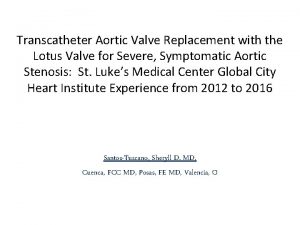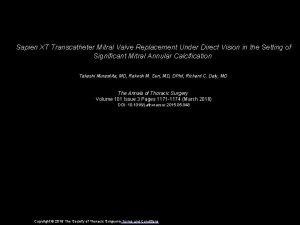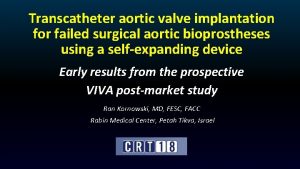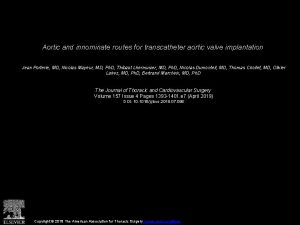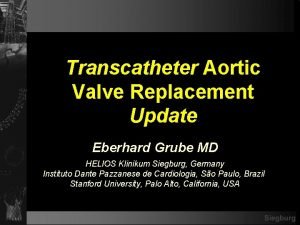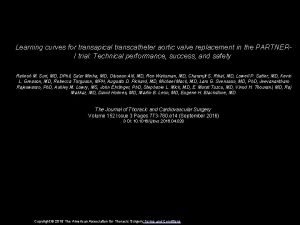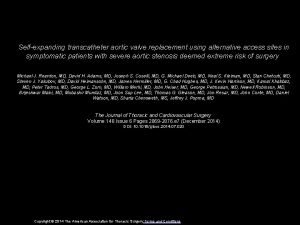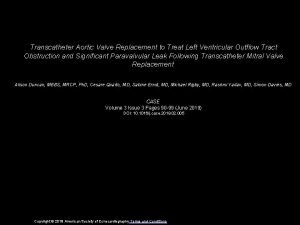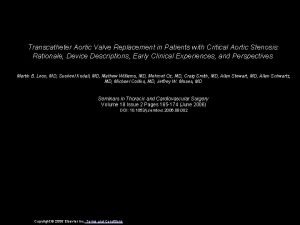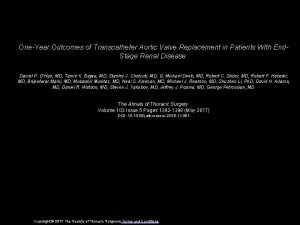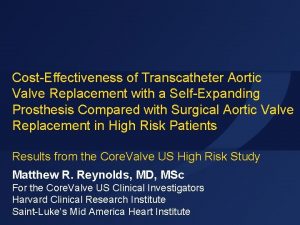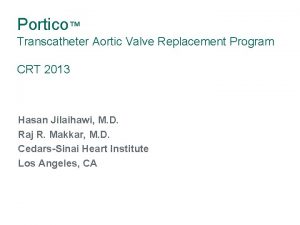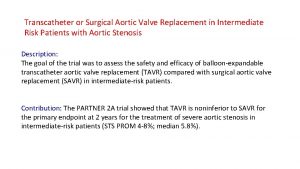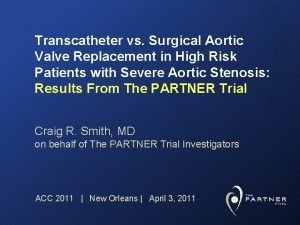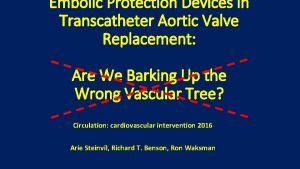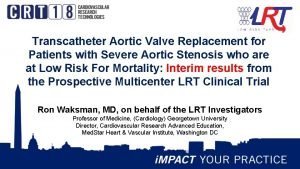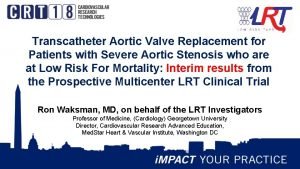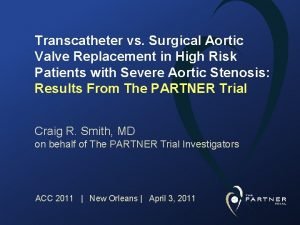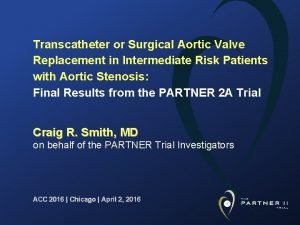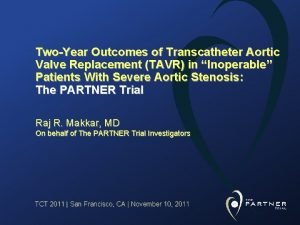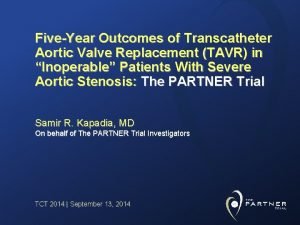SAPIEN 3 Transcatheter Aortic Valve Replacement Compared with
































- Slides: 32

SAPIEN 3 Transcatheter Aortic Valve Replacement Compared with Surgery in Intermediate-Risk Patients: A Propensity Score Analysis Vinod H. Thourani, MD on behalf of The PARTNER Trial Investigators ACC 2016 | Chicago | April 3, 2016

Disclosure Statement of Financial Interest Vinod H. Thourani, MD Within the past 12 months, I or my spouse/partner have had a financial interest/arrangement or affiliation with the organization(s) listed below. Affiliation/Financial Relationship Company • Grant/Research Support • Boston Scientific, Claret Medical, Edwards Lifesciences, Medtronic, St. Jude Medical • Consulting Fees/Honoraria • Abbott Vascular, Edwards Lifesciences, St. Jude Medical • Major Stock Shareholder/Equity • None

Background • The 3 rd generation SAPIEN 3 transcatheter heart valve has demonstrated improved clinical outcomes in high-risk patients at 1 year. • The 30 -day outcomes in intermediate-risk patients treated with SAPIEN 3 in PARTNER 2 were… – All-cause Mortality: 1. 1% – Disabling Stroke: 1. 0% – PVL > Moderate: 3. 8% • There is a paucity of longer-term data in intermediate-risk patients with SAPIEN 3 and there have been no rigorous comparisons with surgery in intermediate-risk patients.

Purpose • To evaluate the 1 -year clinical and echo outcomes of SAPIEN 3 TAVR in intermediate-risk patients. • To compare these intermediate-risk patient outcomes using SAPIEN 3 TAVR with surgery results in similar intermediate-risk patients from the PARTNER 2 A trial using a rigorous pre-specified propensity score analysis.

The PARTNER 2 A and S 3 i Trials Study Design Intermediate Risk Symptomatic Severe Aortic Stenosis Intermediate Risk ASSESSMENT by Heart Valve Team P 2 S 3 i P 2 A n = 1078 n = 2032 ASSESSMENT: Optimal Valve Delivery Access Transfemoral (TF) TF TAVR SAPIEN 3 ASSESSMENT: Transfemoral Access Yes Transapical / Transaortic (TA/TAo) TA/TAo TAVR SAPIEN 3 No Transfemoral (TF) Transapical / Trans. Aortic (TA/TAo) 1: 1 Randomization TF TAVR SAPIEN XT VS Surgical AVR TA/Tao TAVR SAPIEN 3 VS Surgical AVR

The PARTNER 2 A and S 3 i Trials Study Design Intermediate Risk Symptomatic Severe Aortic Stenosis Intermediate Risk ASSESSMENT by Heart Valve Team P 2 S 3 i P 2 A n = 1078 n = 2032 ASSESSMENT: Optimal Valve Delivery Access Transfemoral (TF) TF TAVR SAPIEN 3 ASSESSMENT: Transfemoral Access Yes Transapical / Transaortic (TA/TAo) TA/TAo TAVR SAPIEN 3 No Transfemoral (TF) Transapical / Trans. Aortic (TA/TAo) 1: 1 Randomization TF TAVR SAPIEN XT VS Surgical AVR TA/Tao TAVR SAPIEN 3 Primary Endpoint: All-Cause Mortality, All Stroke, or Mod/Sev AR at One Year (Non-inferiority Propensity Score Analysis) VS Surgical AVR

SAPIEN Platforms in PARTNER Device Evolution SAPIEN XT SAPIEN 3 16 -20 F 14 -16 F Valve Technology Sheath Compatibility 22 -24 F Available Valve Sizes 23 mm 26 mm 29 mm 20 mm 23 mm 26 mm 29 mm

The PARTNER 2 A and S 3 i Trials Inclusion Criteria • Severe AS: Echo-derived AVA ≤ 0. 8 cm 2 (or AVA index < 0. 5 cm 2/m 2) and mean AVG > 40 mm. Hg or peak jet velocity > 4. 0 m/s • Cardiac Symptoms: NYHA Functional Class ≥ II • Intermediate Risk: 1. Determined by a multi-disciplinary Heart Team 2. Using a guideline STS between 4 -8%*, and 3. Adjudicated by case review committee * PARTNER 2 A used guideline STS ≥ 4%

The PARTNER 2 A and S 3 i Trials Key Exclusion Criteria Anatomic: • Aortic annulus diameter < 18 mm or > 28 mm (echo or CT) • Bicuspid AV or predominant AR (> 3+) • Severe LV dysfunction (LVEF < 20%) • Untreated CAD requiring revascularization with either unprotected LM coronary disease or Syntax score > 32 • Pre-existing surgical valve in any position Clinical: • • • Serum Cr > 3. 0 mg/d. L or dialysis dependent Acute MI within 1 month CVA or TIA within 6 months Hemodynamic instability Life expectancy < 24 months

The PARTNER 2 A and S 3 i Trials Primary Endpoint • Non-hierarchical composite of all-cause mortality, all stroke, or ≥ moderate aortic regurgitation at one year • Propensity score analysis of the valve implant (VI) populations from S 3 i compared to the surgical arm of the PARTNER 2 A trial • All patients followed for at least 1 year • Event rates by Kaplan-Meier estimates • Non-inferiority trial design followed by superiority testing for the primary endpoint and components

Other Important Endpoints VARC 2 Definitions SAFETY • • • Cardiac mortality Major vascular complications All strokes and TIAs Repeat hospitalizations Peri-procedural MIs Acute kidney injury Life-threatening or disabling bleeding New permanent pacemakers New onset atrial fibrillation Repeat AV intervention Endocarditis EFFICACY • • • NYHA class QOL instruments 6 -minute walk test Days alive out-of-hospital ICU and index hospital LOS ECHO VALVE PERFORMANCE • • Mean AV gradient Effective orifice area (and index) LV function (ejection fraction) Paravalvular AR

Study Methodology • Every patient reviewed (including imaging studies) by multi-disciplinary Heart Team AND case review committee • Systematic assessment by neurologists before and after index procedures for ascertainment of neurologic events • MDCT evaluation of annulus dimensions for all TAVR S 3 i patients (with core laboratory analyses) • In patients with CAD requiring revascularization: treatment (PCI or CABG) allowed (unless unprotected left main disease or Syntax score > 32) at the discretion of the Heart Team • CEC adjudication of major clinical events (VARC 2 definitions whenever possible)

Baseline Patient Characteristics Demographics (AT) TAVR (n = 1077) Surgery (n = 944) p-value Age - yrs 81. 9 ± 6. 6 81. 6 ± 6. 8 0. 23 Male - % 61. 7 55. 0 0. 002 28. 7 ± 6. 1 28. 4 ± 6. 2 0. 32 5. 2 [4. 3, 6. 3] 5. 4 [4. 4, 6. 7] 0. 0002 72. 5 76. 1 0. 07 Characteristic BMI - kg/m 2 Median STS Score - % NYHA Class III or IV - % mean ± SD, median [IQR]

Baseline Patient Characteristics Other Co-morbidities (AT) TAVR (n = 1077) Surgery (n = 944) p-value CAD 69. 6 66. 5 0. 14 Previous CABG 27. 9 25. 7 0. 27 Cerebrovascular Disease 9. 0 10. 36 PVD 28. 2 32. 2 0. 05 COPD 30. 0 30. 2 0. 92 Cr level > 2 mg/d. L 7. 5 5. 4 0. 06 Atrial Fibrillation 36. 0 34. 9 0. 61 Permanent Pacemaker 13. 2 12. 0 0. 42 15 ft Walk Test > 7 s 41. 3 45. 7 0. 06 Characteristic (%)

Statistical Analysis Plan - 1 • Pre-specified propensity score analysis of SAPIEN 3 TAVR vs. P 2 A surgery for the composite primary endpoint (allcause mortality, all stroke, or total AR ≥ moderate at 1 year). • The analysis incorporated 22 pre-specified baseline characteristics that were factored through a logistic regression into a propensity score. • Patient population was divided into quintiles based on propensity scores. • Quintile stratification (unlike patient matching) allows for the use of data from all patients, minimizing selection bias.

Statistical Analysis Plan - 2 • The primary hypothesis was non-inferiority of SAPIEN 3 vs. surgery from P 2 A for the primary endpoint at 1 year. • Non-inferiority: – One-sided alpha: 0. 05 – Hypothesis testing: upper bound of the one-sided 95% CI of bound the primary weighted difference of proportions endpoint (weighted avg test - control) < 7. 5% • Superiority: – Two-sided alpha: 0. 05 – Hypothesis testing: upper or lower bound of the two-sided 95% CI of the primary weighted difference of proportions endpoint (weighted avg test - control) < 0 for TAVR and > 0 for surgery

Quintile Propensity Score Analysis: Primary Endpoint Surgery TAVR # Patients Mortality, Stroke, AR > Mod Proportional Difference Weighting 191 28. 3% 138 13. 8% -14. 5% 0. 14 175 22. 9% 171 9. 9% -12. 9% 0. 18 147 19. 7% 197 10. 7% -9. 1% 0. 20 126 23. 0% 219 14. 6% -8. 4% 0. 23 108 19. 4% 238 15. 1% -4. 3% 0. 25 Overall weighted difference of proportions - 9. 2% [-12. 4%, -6. 0%] two-sided 90% CI

Primary Endpoint - Non-inferiority Death, Stroke, or AR ≥ Mod at 1 Year (VI) Weighted Difference -9. 2% Upper 1 -sided 95% CI -6. 0% Non-Inferiority p -value < 0. 001 Pre-specified non-inferiority margin = 7. 5% -10 -8 -6 -4 -2 Favors TAVR 0 2 4 6 Favors Surgery Primary Non-Inferiority Endpoint Met 8 10

Primary Endpoint - Superiority Death, Stroke, or AR ≥ Mod at 1 Year (VI) Weighted Difference -9. 2% Upper 2 -sided 95. 0% CI -5. 4% -10 -8 -6 -4 -2 Favors TAVR 0 Superiority Testing p-value < 0. 001 2 4 Favors Surgery Superiority Achieved 6 8 10

Superiority Analysis Components of Primary Endpoint (VI) Favors Surgery Favors TAVR Mortality -10 -8 -6 -4 AR > Moderate -10 -8 Superiority Testing p-value < 0. 001 -2 6 0 2 4 Weighted Difference -3. 5% Upper 2 -sided 95% CI -1. 1% Stroke -10 Weighted Difference -5. 2% Upper 2 -sided 95% CI -2. 4% -6 -4 -2 0 2 4 Weighted Difference +1. 2% Lower 2 -sided 95% CI +0. 2% -2 0 2 4 8 10 Superiority Testing p-value = 0. 004 6 8 10 Superiority Testing p-value = 0. 0149 6 8 10

Unadjusted Clinical Events At 30 Days and 1 Year (AT) Events (%) 30 Days 1 Year TAVR Surgery All-cause 1. 1 4. 0 7. 4 13. 0 Cardiovascular 0. 9 3. 1 4. 5 8. 1 Disabling Stroke 1. 0 4. 4 2. 3 5. 9 All Stroke 2. 7 6. 1 4. 6 8. 2 2. 0 8. 4 16. 6 Death Neurological Events All-cause Death and Disabling Stroke

Unadjusted Time-to-Event Analysis All-Cause Mortality and All Stroke (AT) 40 All-Cause Mortality / Stroke Rate (%) P 2 A Surgery SAPIEN 3 TAVR 30 18. 8% 20 10. 8% 9. 7% 10 3. 7% 0 0 3 9 12 757 962 743 930 Months from Procedure Number at risk: P 2 A Surgery 944 S 3 TAVR 1077 6 805 1012 786 987

Unadjusted Time-to-Event Analysis All-Cause Mortality (AT) 40 P 2 A Surgery All-Cause Mortality (%) SAPIEN 3 TAVR 30 20 13. 0% 10 4. 0% 7. 4% 1. 1% 0 0 3 9 12 808 991 795 963 Months from Procedure Number at risk: P 2 A Surgery 944 1077 S 3 TAVR 6 859 1043 836 1017

Unadjusted Time-to-Event Analysis All Stroke (AT) 40 P 2 A Surgery SAPIEN 3 TAVR All Stroke (%) 30 20 10 8. 2% 6. 1% 4. 6% 2. 7% 0 0 3 9 12 757 962 743 930 Months from Procedure Number at risk: P 2 A Surgery 944 1077 S 3 TAVR 6 805 1012 786 987

Other Unadjusted Clinical Outcomes At 30 Days and 1 Year (AT) 30 Days Events (%) 1 Year TAVR Surgery (n = 1077) (n = 944) Re-hospitalization 4. 6 6. 8 11. 4 15. 1 MI 0. 3 1. 9 1. 8 3. 1 Major Vascular Complication 6. 1 5. 4 --- AKI (Stage III) 0. 5 3. 3 --- Life-Threatening/Disabling Bleeding 4. 6 46. 7 --- New Atrial Fibrillation 5. 0 28. 3 5. 9 29. 2 New Permanent Pacemaker 10. 2 7. 3 12. 4 9. 4 Re-intervention 0. 1 0. 0 0. 6 0. 5 Endocarditis 0. 2 0. 0 0. 8 0. 7

Paravalvular Regurgitation 3 -Class Grading Scheme (VI) P < 0. 001 ≥ Moderate 1. 5% Mild 39. 8% No. of echos 30 Days 1 Year P 2 A Surgery 755 610 S 3 i TAVR 992 875

The PARTNER 2 A and S 3 i Trials Conclusions - 1 • In intermediate-risk patients, SAPIEN 3 TAVR resulted in low 1 -year rates of all-cause mortality (7. 4%), all stroke (4. 6%), and moderate or severe aortic regurgitation (1. 5%)

The PARTNER 2 A and S 3 i Trials Conclusions - 2 • A rigorous propensity score analysis comparing SAPIEN 3 TAVR with surgery from PARTNER 2 A in intermediate-risk patients at 1 year demonstrated: – Non-inferiority for the primary endpoint (composite of all-cause mortality, all stroke, or AR ≥ moderate) – Superiority of SAPIEN 3 TAVR for the primary endpoint, all-cause mortality, and all stroke – Superiority of surgery for AR ≥ moderate • Time-to-event analyses indicated that the benefits of SAPIEN 3 TAVR occurred in the first few months, suggesting procedure-related effects

The PARTNER 2 A and S 3 i Trial Clinical Implications • The conclusions from the PARTNER 2 A randomized trial and this propensity score analysis provide strong evidence that in intermediate-risk patients with severe aortic stenosis, SAPIEN 3 TAVR compared with surgery improves clinical outcomes and is the preferred therapy.

The PARTNER 2 A and S 3 i Trial Lancet On-line Special thanks to the PARTNER sites and patients, the clinical research teams, and the writing group!

The PARTNER 2 A and S 3 i Trial Lancet On-line

The PARTNER 2 A and S 3 i Trial Lancet On-line
 Aortic semilunar valve sheep heart
Aortic semilunar valve sheep heart Pannus
Pannus Aortic valve leaflets
Aortic valve leaflets Dvi aortic valve
Dvi aortic valve Tricuspid valve
Tricuspid valve Dvi aortic valve
Dvi aortic valve Aortic stenosis classification
Aortic stenosis classification Aortic root enlargement
Aortic root enlargement Aortic valve dimensionless index
Aortic valve dimensionless index Example of combustion reaction
Example of combustion reaction Dr mariano sapien
Dr mariano sapien Ecotest personal dosimeter
Ecotest personal dosimeter Corevalve vs sapien
Corevalve vs sapien Difference between proportional valve and servo valve
Difference between proportional valve and servo valve Pathophysiology of aortic aneurysm ppt
Pathophysiology of aortic aneurysm ppt Sircumflex
Sircumflex Aortic stanosis
Aortic stanosis Aortic pressure curve
Aortic pressure curve Chest x-ray anatomy
Chest x-ray anatomy Brachiocephalic trunk
Brachiocephalic trunk Type b aortic dissection
Type b aortic dissection Great cardiac vein
Great cardiac vein Aortic regurgitation murmur
Aortic regurgitation murmur Pleura location
Pleura location Thorasic aortic aneurysm
Thorasic aortic aneurysm Semilunar
Semilunar 4th aortic arch derivatives
4th aortic arch derivatives X-ray
X-ray Branches off aortic arch
Branches off aortic arch Watch?v=0evgft8hgns
Watch?v=0evgft8hgns Surfaces of heart
Surfaces of heart Coronary sulcus
Coronary sulcus Aortic body
Aortic body

